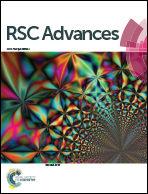The electrical properties and modulation of g-C3N4/β-As and g-C3N4/β-Sb heterostructures: a first principles study
Abstract
The electronic properties of the g-C3N4/β-As and g-C3N4/β-Sb heterojunctions are investigated via density functional theory. We find that both heterostructures are indirect band gap semiconductors that, when applied to a photocatalytic device, will suffer from inefficient light emission. Fortunately, the band gap of the two junctions can be adjusted by external biaxial strain. As strain increases from compression to extensive, both compounds undergo a transition from metals, indirect semiconductors to direct semiconductors. Moreover, due to the charge transfer, each junction forms a large built-in electric field, which helps to prevent the recombination of electrons and holes. Our results are expected to widen the potential applications of these heterojunctions in nanodevices.



 Please wait while we load your content...
Please wait while we load your content...